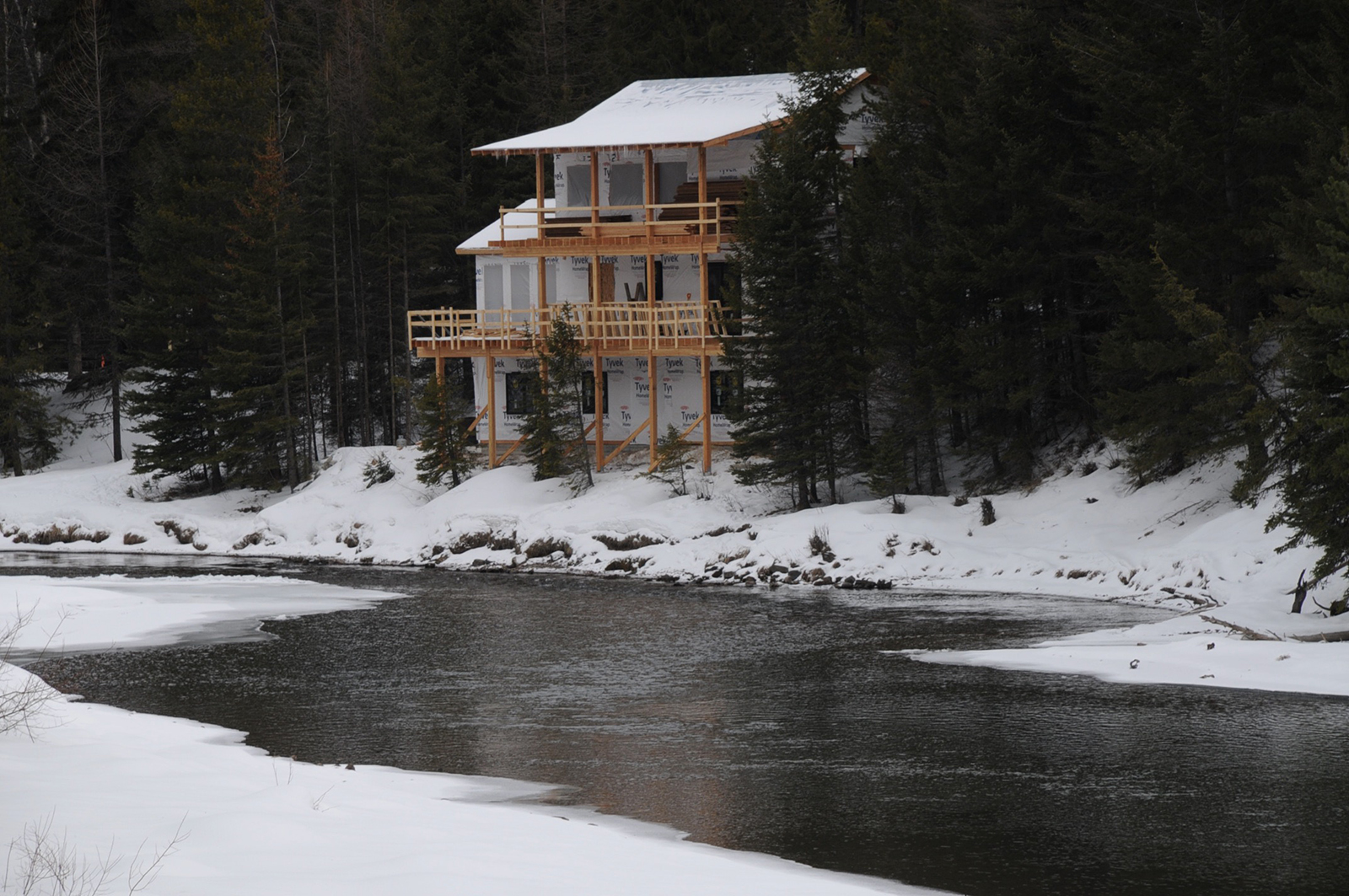Conservation District Responds to California Couple’s Lawsuit, Maintains Glacier Park Home was Built Illegally
The property owners argue Glacier Park has exclusive jurisdiction over their private parcel inside park boundaries, and that it isn't subject to state environmental regulations
By Tristan Scott
In a recent federal court filing, the Flathead Conservation District (FCD) defended its decision to order the removal of a home under construction on a private parcel in Glacier National Park, arguing that its location within the park’s boundaries does not preempt the enforcement of the state’s foremost streambed protection law, characterizing the regulatory measure as “entirely consistent with the purpose of the National Parks.”
As the defendant in the case, the FCD also disputes the property owners’ assertion that they received permission from Glacier National Park to build a home without a permit on the banks of McDonald Creek, at a prominent location visible to millions of visitors passing through Apgar Village inside the park’s popular west entrance.
“Glacier National Park did not ‘allow’ the construction on this private property,” according to the FCD filing. “Glacier National Park has no regulations related to construction on private property. There are rigorous rules related to construction within Glacier National Park (and all federal lands), none of which were complied with by the plaintiffs … The plaintiffs obtained no valid permit, contract or agreement with the United States.”
The case centers on John and Stacy Ambler, a California couple who is suing the FCD on the grounds that it overstepped its authority by ordering the demolition of the partially completed home. Now more than a year old, the case began when residents in the West Glacier area complained about the construction project, clearly visible to visitors and residents alike, which prompted FCD to conduct an onsite inspection. Following the inspection, FCD determined the Amblers had violated the National Stream Law Protection Act by building on an immediate bank of McDonald Creek and excavating the streambank to create a pad for construction, all without obtaining the necessary 310 permit to do so.
The FCD ruled that the Amblers must remove the home and remediate the streambed no later than April 1, 2024.
However, the couple is challenging the conservation district’s jurisdictional authority in the case and has filed separate lawsuits in state and federal court. According to the Amblers, neither Flathead County nor Glacier National Park — the two entities they argue should have the final say in the matter — required any permits to begin construction on the property and connect the residence to the Apgar Village water and sewer system.
They also appealed the FCD’s determination in what’s called a declaratory ruling process, which was overseen by hearing officer Laurie Zeller, a retired Montana Department of Natural Resources and Conservation (DNRC) bureau chief who is an expert in streambed permitting.
In making her final determination, Zeller said the streambed law applies to the Amblers and the FCD exercised proper enforcement authority when it ordered the structure’s removal.
“I believe that everyone who is building on or near a perennial-flowing stream in the state of Montana is subject to that law,” Zeller said. “I believe that the house is within the definition of a perennial-flowing stream. I believe it has a permanent impact and I think as such it requires review.”
The case is unique given the project’s location inside Glacier National Park, which when established in 1910 trapped private tracts of land staked by homesteaders prior to the park’s existence. Originally totaling 13,000 acres, many of the homesteaders sold their property to the National Park Service a century ago, but some remain. Known as “inholding,” the bill establishing Glacier Park was explicit in its concession that landowners would retain “full use and enjoyment of their properties” and that “nothing herein contained shall affect any valid existing claim, location or entry under the land rules of the United States, or the rights of any such claimant.”
According to the response to the Amblers’ federal lawsuit by Camisha Sawtelle, the attorney representing the FCD, “The location of the Ambler property does not preempt enforcement of a state law that is entirely consistent with the purpose of the National Parks.”
Sawtelle also rejects the Amblers’ reliance on a statute establishing the boundaries of Glacier National Park, which declares that, “Nothing herein contained shall affect any valid claim, location, or entry existing under the land laws of the United States before May 11, 1910, or the rights of any such claimant, locator, or entryman to the full use and enjoyment of his land.”
The property at issue in the Amblers’ dispute was claimed by Charles Howes on May 21, 1908. The United States General Land Office granted the property to Howes in 1908 and it has remained in private ownership since. Therefore, Sawtelle wrote, the provisions of Glacier’s enabling statute “do not apply to the property at issue.”